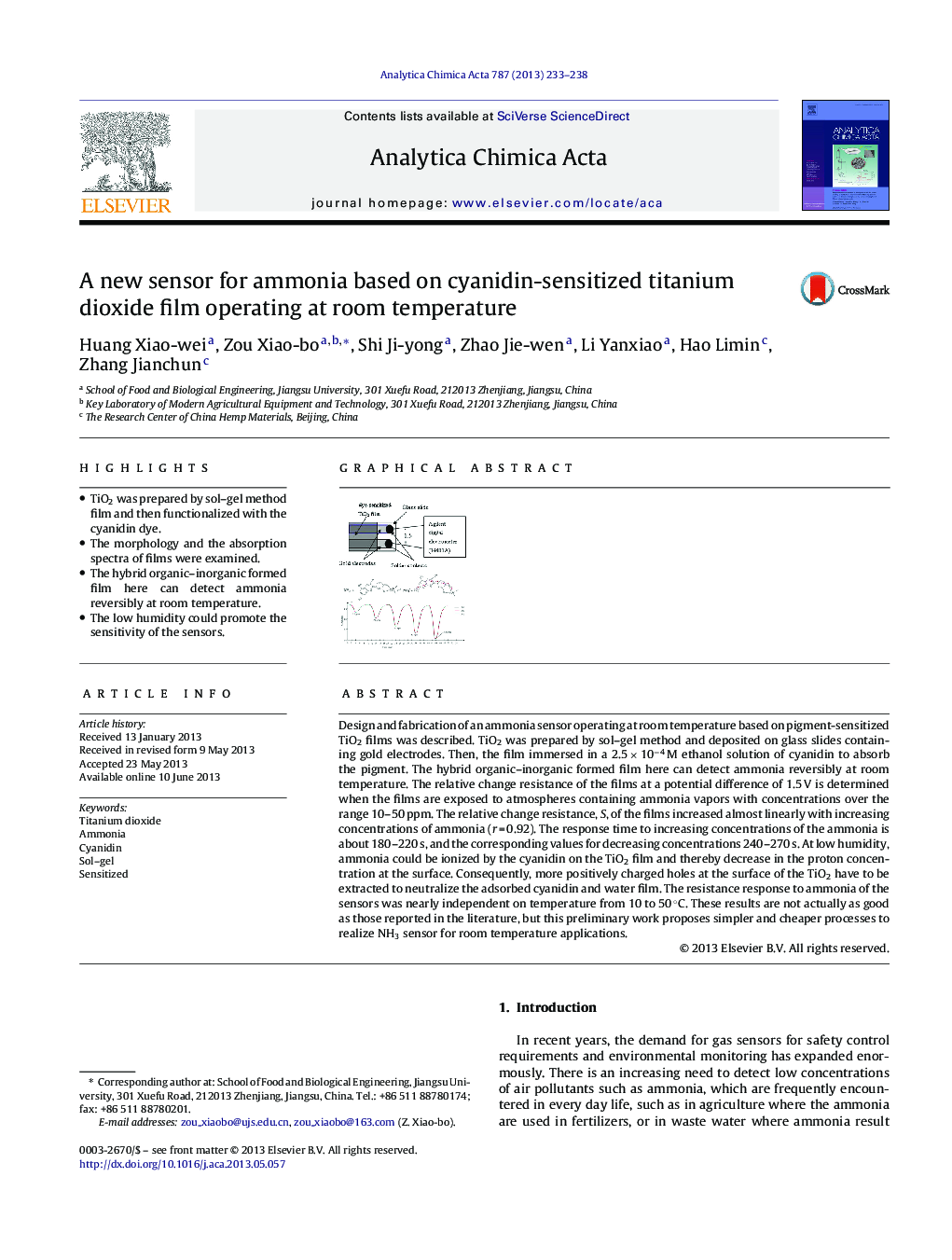| کد مقاله | کد نشریه | سال انتشار | مقاله انگلیسی | نسخه تمام متن |
|---|---|---|---|---|
| 1164769 | 1491045 | 2013 | 6 صفحه PDF | دانلود رایگان |

• TiO2 was prepared by sol–gel method film and then functionalized with the cyanidin dye.
• The morphology and the absorption spectra of films were examined.
• The hybrid organic–inorganic formed film here can detect ammonia reversibly at room temperature.
• The low humidity could promote the sensitivity of the sensors.
Design and fabrication of an ammonia sensor operating at room temperature based on pigment-sensitized TiO2 films was described. TiO2 was prepared by sol–gel method and deposited on glass slides containing gold electrodes. Then, the film immersed in a 2.5 × 10−4 M ethanol solution of cyanidin to absorb the pigment. The hybrid organic–inorganic formed film here can detect ammonia reversibly at room temperature. The relative change resistance of the films at a potential difference of 1.5 V is determined when the films are exposed to atmospheres containing ammonia vapors with concentrations over the range 10–50 ppm. The relative change resistance, S, of the films increased almost linearly with increasing concentrations of ammonia (r = 0.92). The response time to increasing concentrations of the ammonia is about 180–220 s, and the corresponding values for decreasing concentrations 240–270 s. At low humidity, ammonia could be ionized by the cyanidin on the TiO2 film and thereby decrease in the proton concentration at the surface. Consequently, more positively charged holes at the surface of the TiO2 have to be extracted to neutralize the adsorbed cyanidin and water film. The resistance response to ammonia of the sensors was nearly independent on temperature from 10 to 50 °C. These results are not actually as good as those reported in the literature, but this preliminary work proposes simpler and cheaper processes to realize NH3 sensor for room temperature applications.
Figure optionsDownload as PowerPoint slide
Journal: Analytica Chimica Acta - Volume 787, 17 July 2013, Pages 233–238